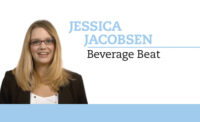![]()
Retailers Offer More Choices than Ever Before
The Food Marketing Institute released a new study on consumer
retail behavior at its annual convention and trade show in Chicago last month.
Today’s supermarkets are competing against more than a dozen other types of
retailers for consumer food spending, according to FMI.
“Food retailers today include conventional supermarkets, superstores, supercenters, membership clubs, combination (food and drug) stores, convenience stores, dot-coms and gasoline stations. Consumers have never had more choice in variety, value, nutrition and quality,” the association said in the report.
“Food retailers today include conventional supermarkets, superstores, supercenters, membership clubs, combination (food and drug) stores, convenience stores, dot-coms and gasoline stations. Consumers have never had more choice in variety, value, nutrition and quality,” the association said in the report.
Restaurants now make up nearly half of the
$800-billion food market, and FMI says dual-income couples, generation Xers
and the echo boom generation are driving away-from-home consumption. Add to
that a lack of growth in the general population, and retail competition
gets even tighter.
The competition has kept food inflation low — at a yearly average
of 2.5 percent for the past decade. And food continues to become a smaller part
of family spending, from 50 percent of a family’s income during the 19th Century
to a little more than 10 percent today.
It might surprise manufacturers to know that as far
as consolidation is concerned, the United States is on the low end of the
spectrum. In France, 90 percent of the retail food market is controlled by
the top five supermarket companies, while in Belgium they control 82
percent and in the Netherlands they hold 64 percent. By comparison, the top
five retailers in the United States hold 35 percent of the market.
Consumers speak
FMI’s Trends in the United States: Consumer
Attitudes & the Super-market 2004,
indicates that the average U.S. household spends $90 per week on groceries, a slight drop from previous years that
indicates consumers are economizing. Eighty-four percent of those dollars
are spent at the primary grocery store. Suburban consumers spend an average
of $104 per week, while urban consumers are pinching pennies and have
dropped from $90 per week in 2003 to $75 per week this year.
Fast food accounts for the highest percentage of
take-out food sales, with 35 percent of respondents citing fast food as the
most-used alternative to home cooking. Prepared meals from supermarkets
came in second, with 27 percent of consumers buying take-out there, and 18
percent said they most often use full-service restaurants for take-out.
Despite the low-carb trend, 48 percent of respondents
say fat content is their top nutritional concern, while only 20 percent
cite carbohydrates. Sugar follows closely at 18 percent, while calories
come in at 16 percent and salt at 14 percent.
Price is by far the most important factor shoppers consider
when trying a new product. Sixty-seven percent of survey respondents say they
almost always look at price when deciding to buy an item for the first time.
Thirty-seven percent trust a brand name to help them make that decision, 30
percent look at health claims, 34 percent consider the product’s preservative
or additive content, and 18 percent will try a product if it is organic.
| Grocery industry market share by format | ||||
| 2002 | 2007 | |||
| Store | Number | $Share2 | Number | $Share |
| Superstore | 7,900 | 25.8% | 7,800 | 21.7% |
| Conventional supermarket | 12,650 | 18.1% | 12,150 | 16.6% |
| Food/Drug combination | 4,500 | 15.0% | 5,000 | 15.2% |
| Supercenter1 | 1,706 | 10.1% | 2,020 | 15.4% |
| Wholesale club | 966 | 8.5% | 1,135 | 9.2% |
| Convenience | 43,000 | 6.0% | 41,500 | 5.5% |
| Convenience with gasoline | 46,600 | 4.6% | 44,600 | 4.2% |
| Warehouse | 650 | 2.5% | 600 | 2.3% |
| Super warehouse | 510 | 3.0% | 460 | 2.8% |
| Internet | 100 | 0.2% | 200 | 0.5% |
| Limited assortment | 2,000 | 1.7% | 2,600 | 2.1% |
| Deep discounter | 130 | 0.2% | 80 | 0.2% |
| Mini club | 189 | 0.3% | 80 | 0.2% |
| Hypermarket | 7 | 0.1% | 7 | 0.1% |
| Other | 30,000 | 4.2% | 28,000 | 4.0% |
| Total | 150,908 | 146,232 | ||
| 1Includes Kmart, Super
Target, Wal-Mart Supercenters, Fred Meyer and Meijer stores. 2Percentages
do not add up to 100 due to rounding. Source: Food Marketing Institute, Willard Bishop Consulting, Ltd., Store Format 2003 |
||||




